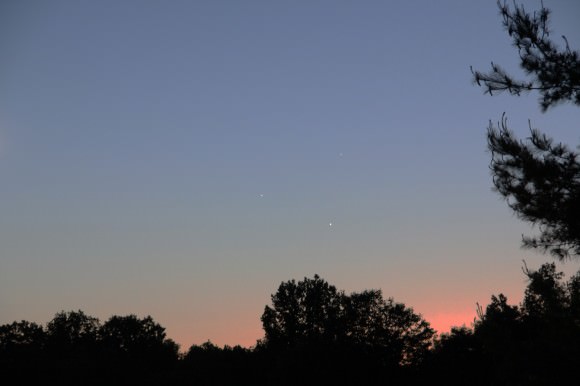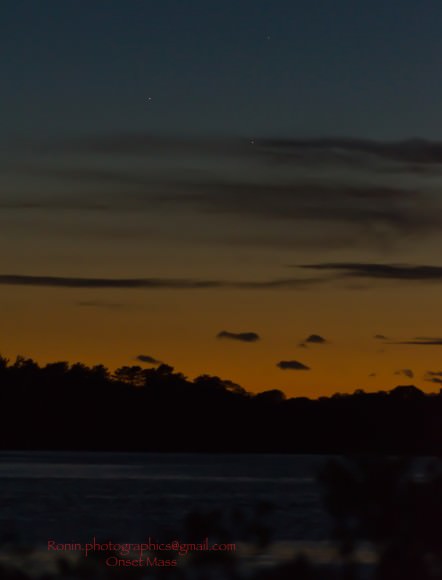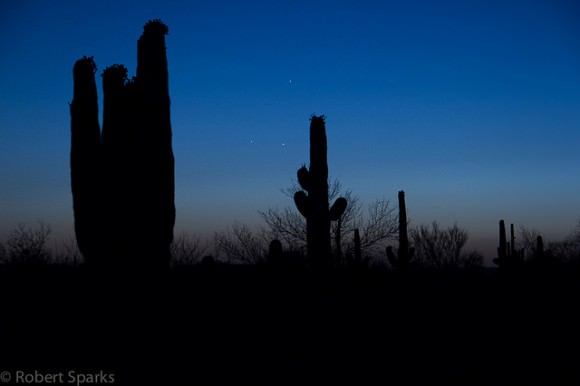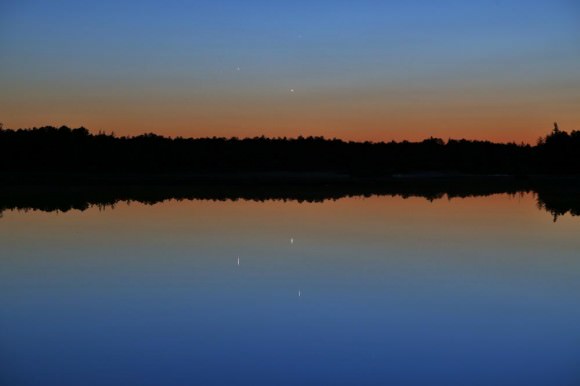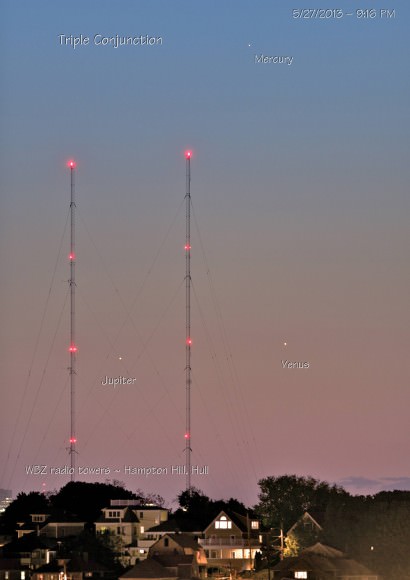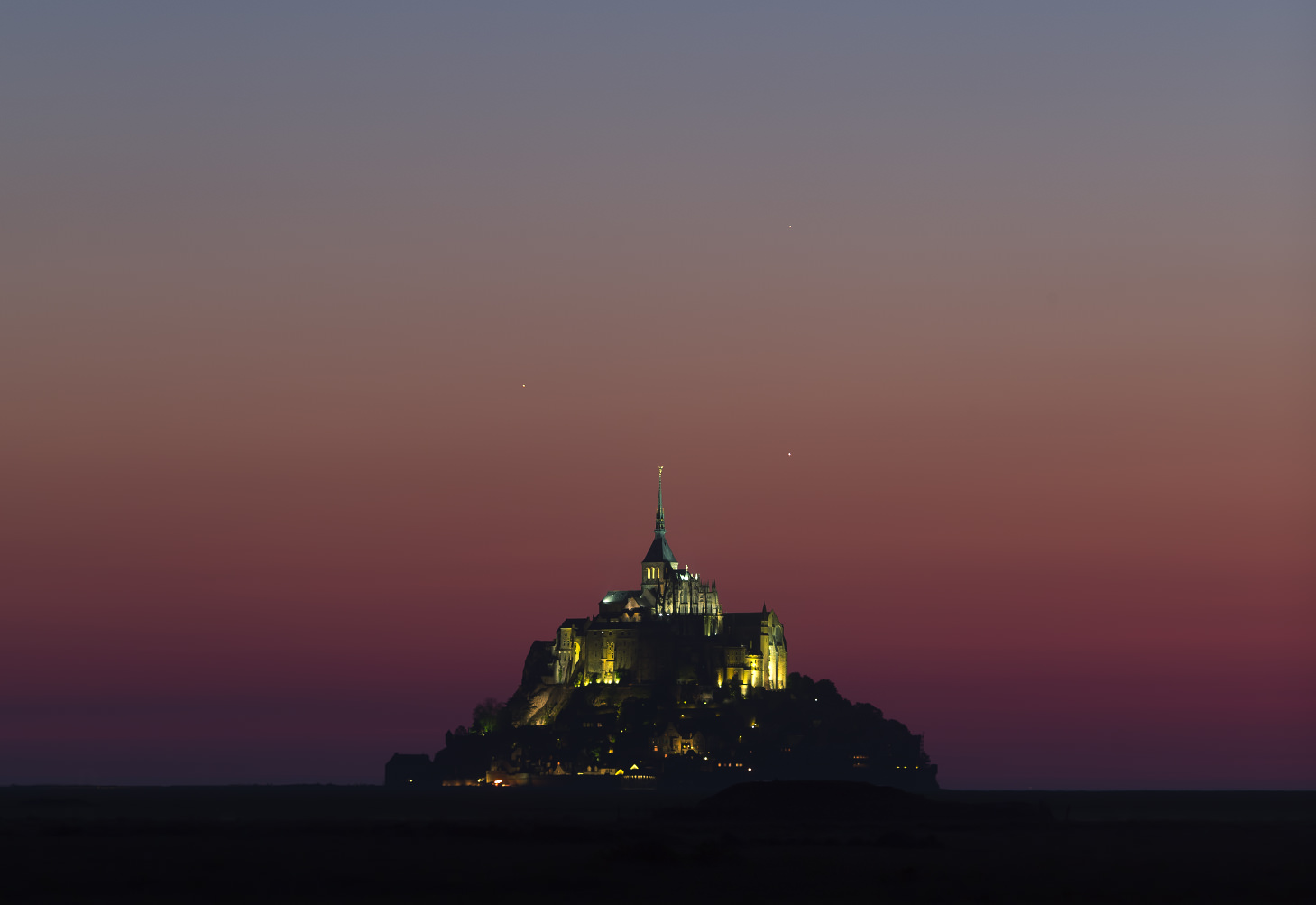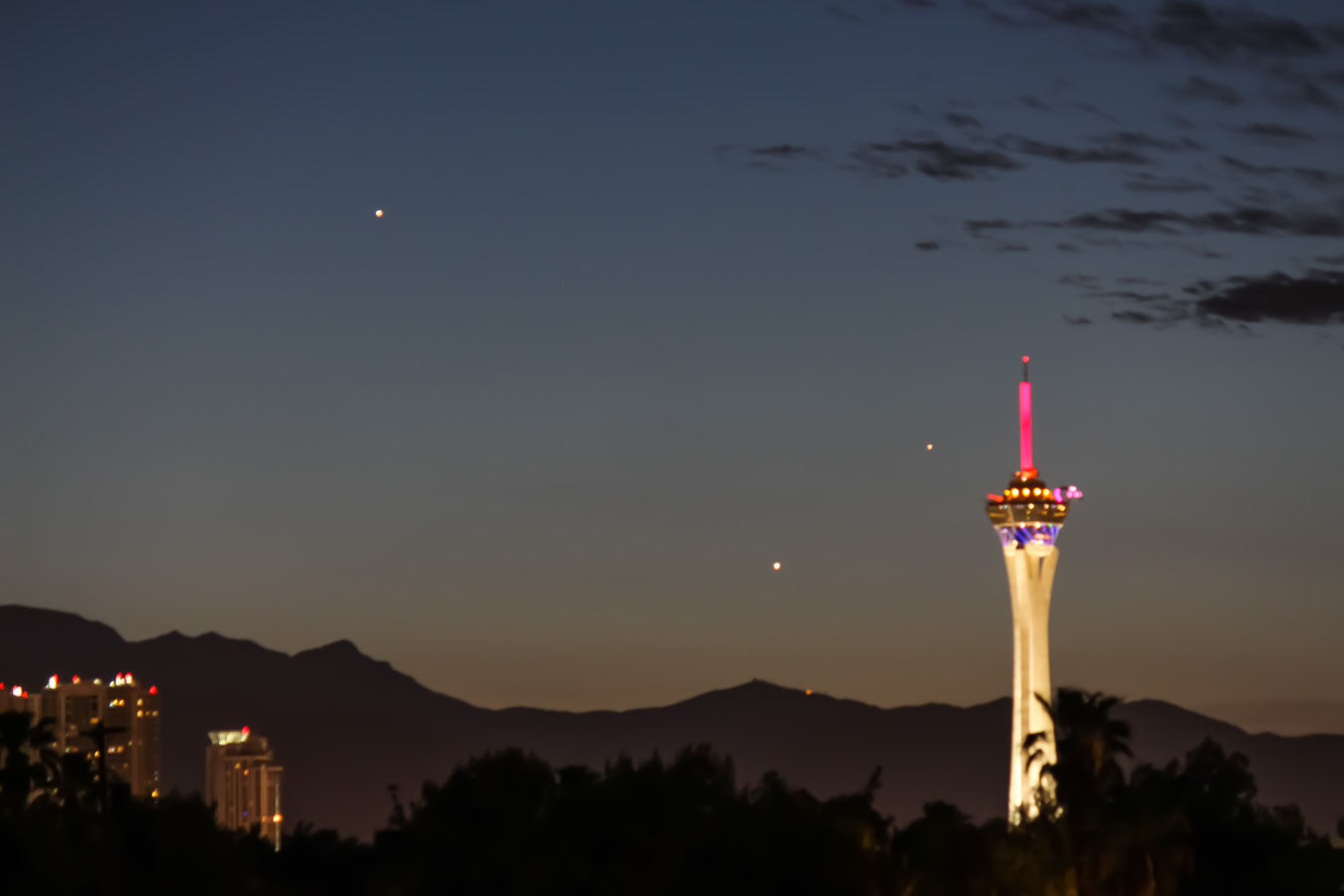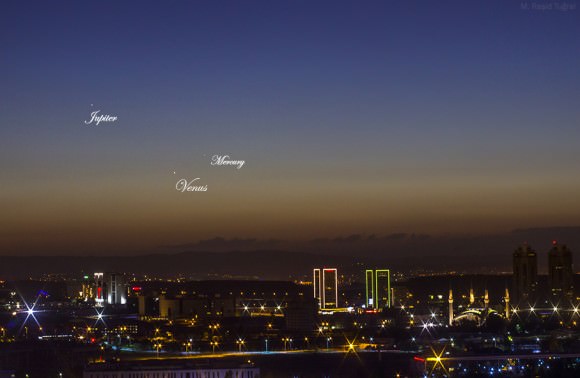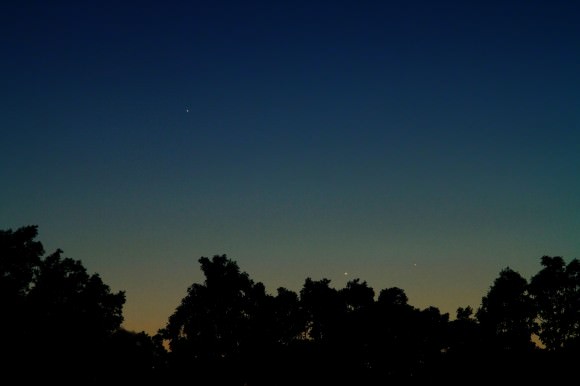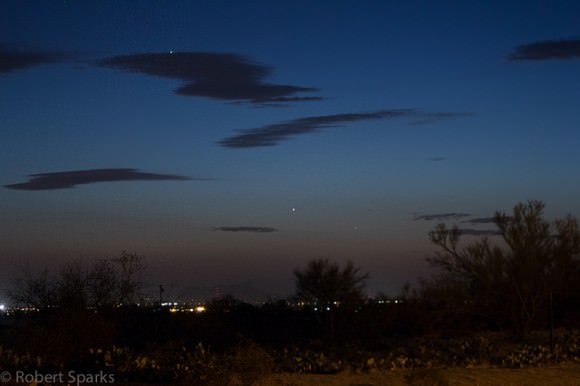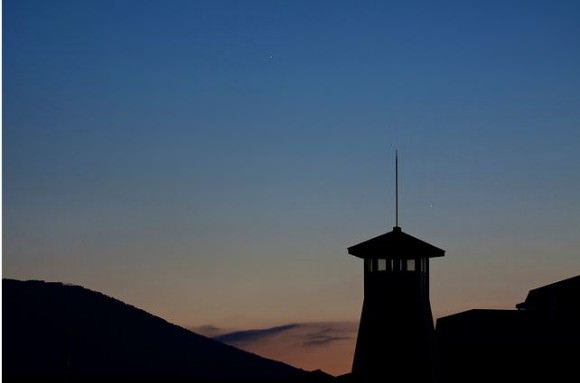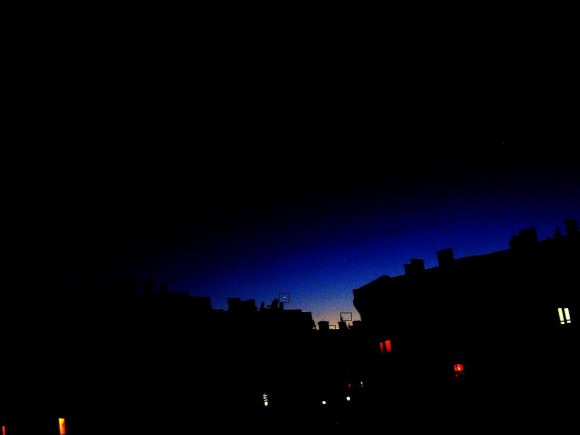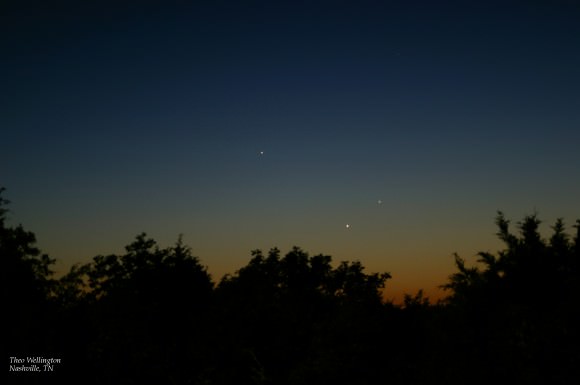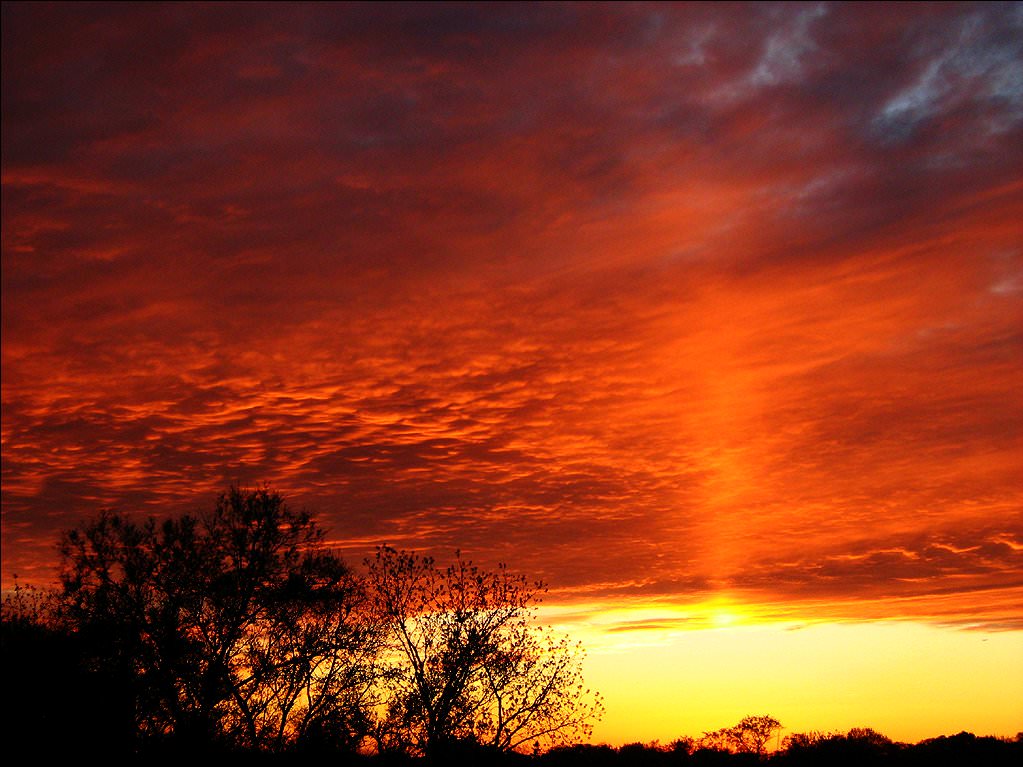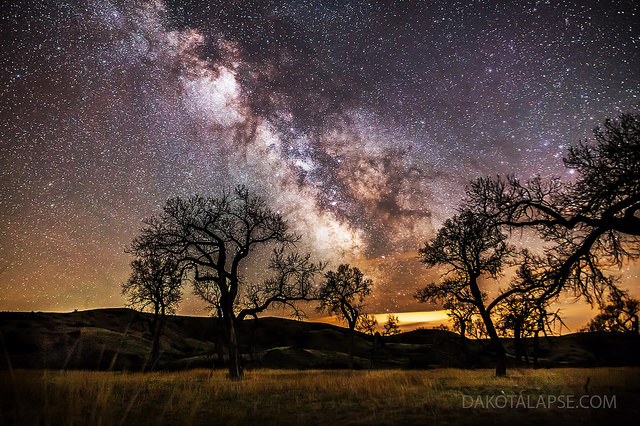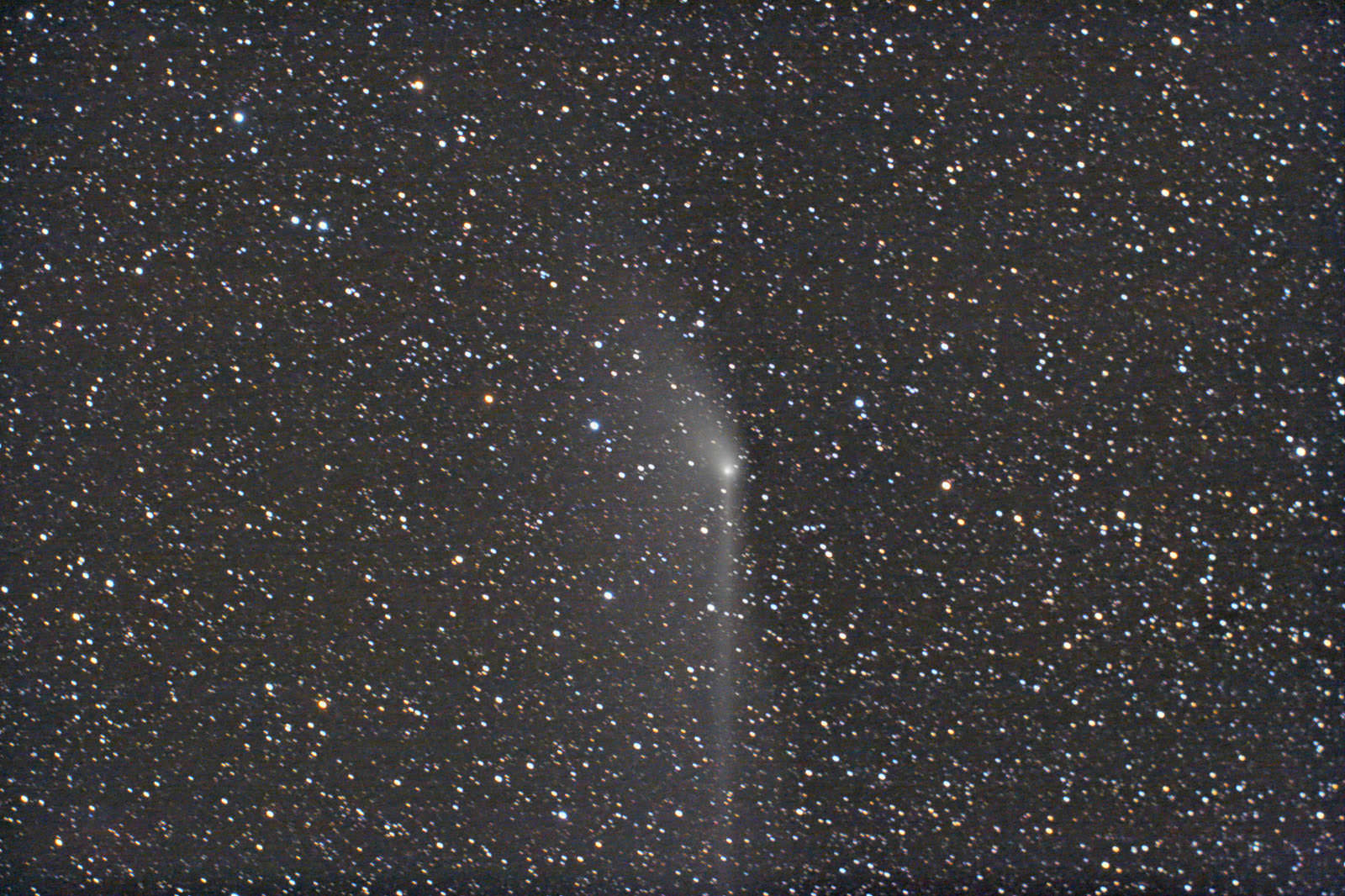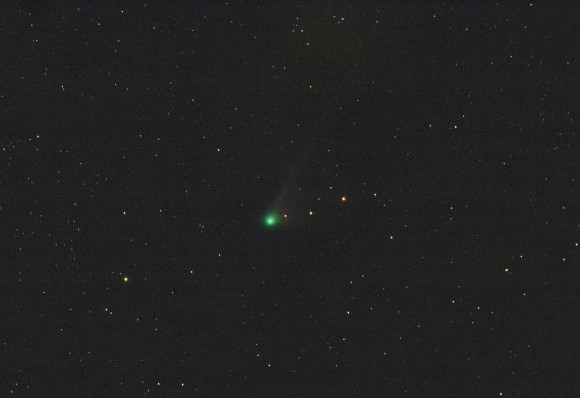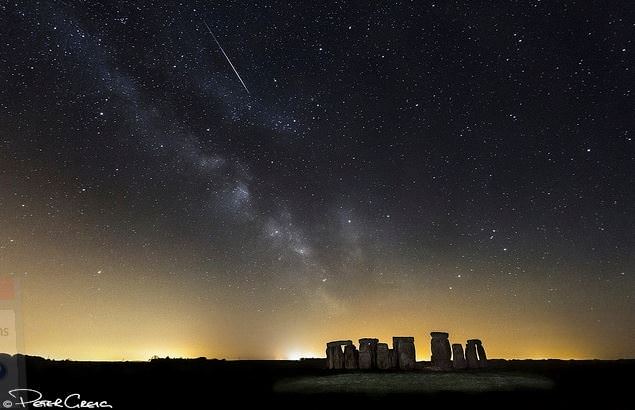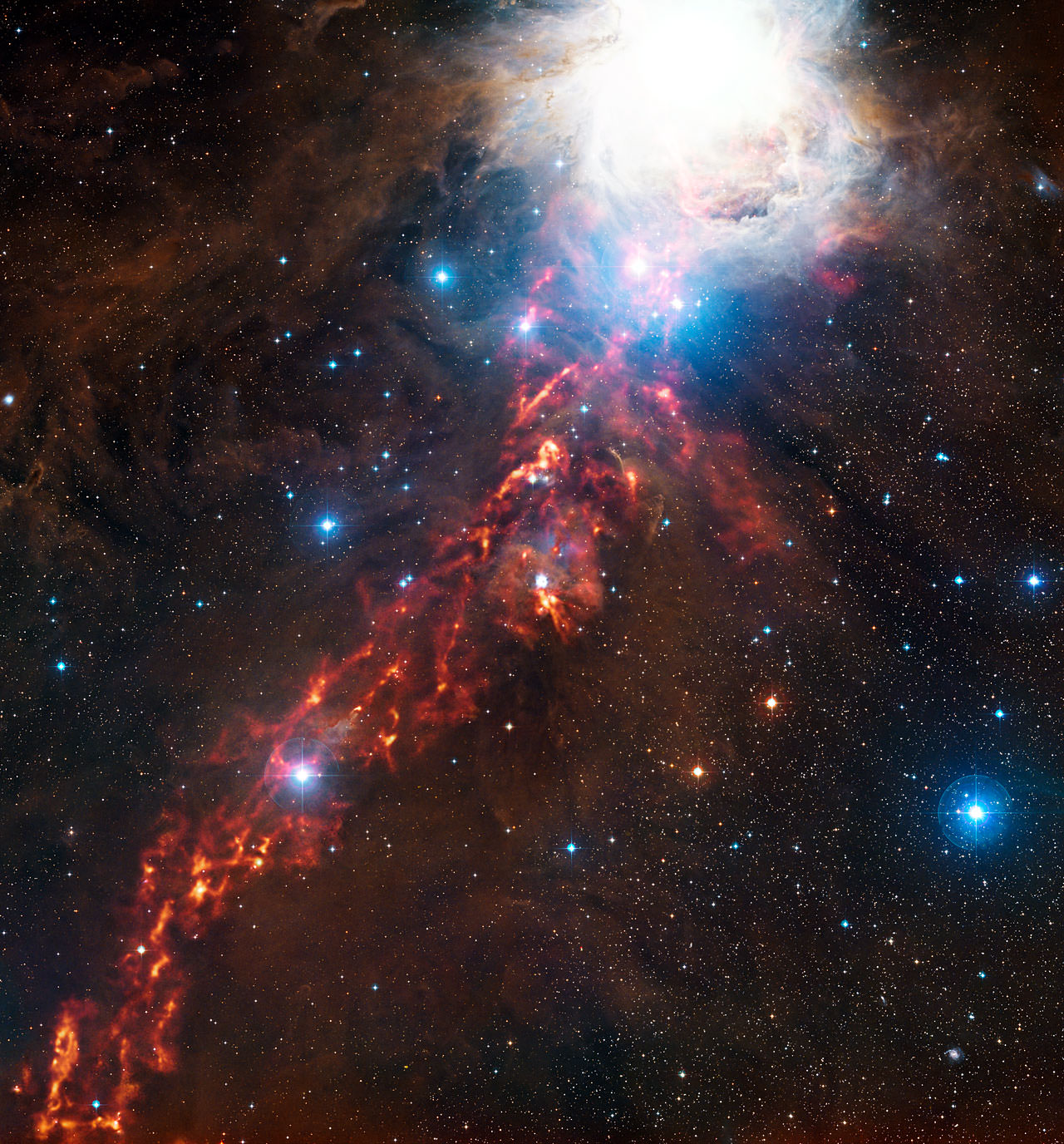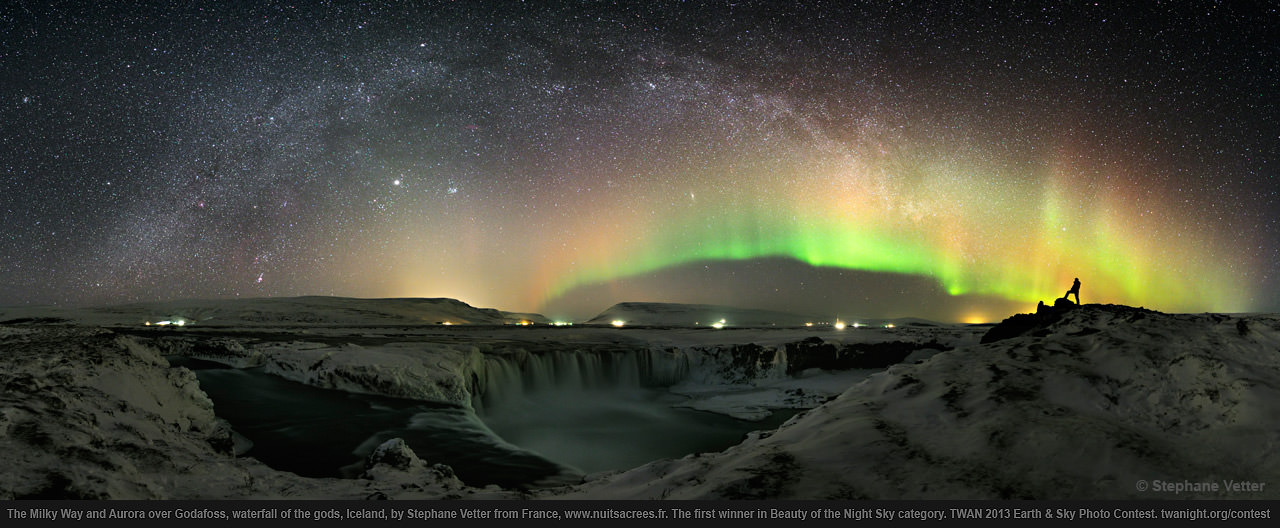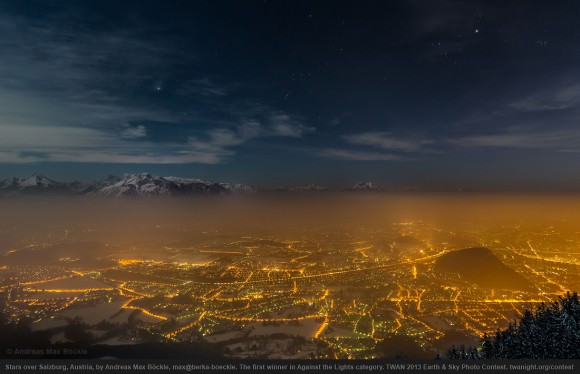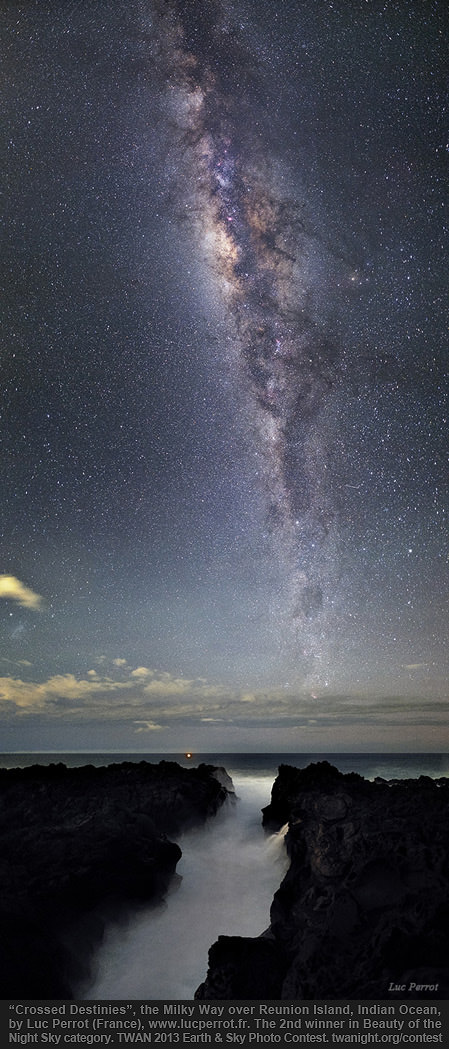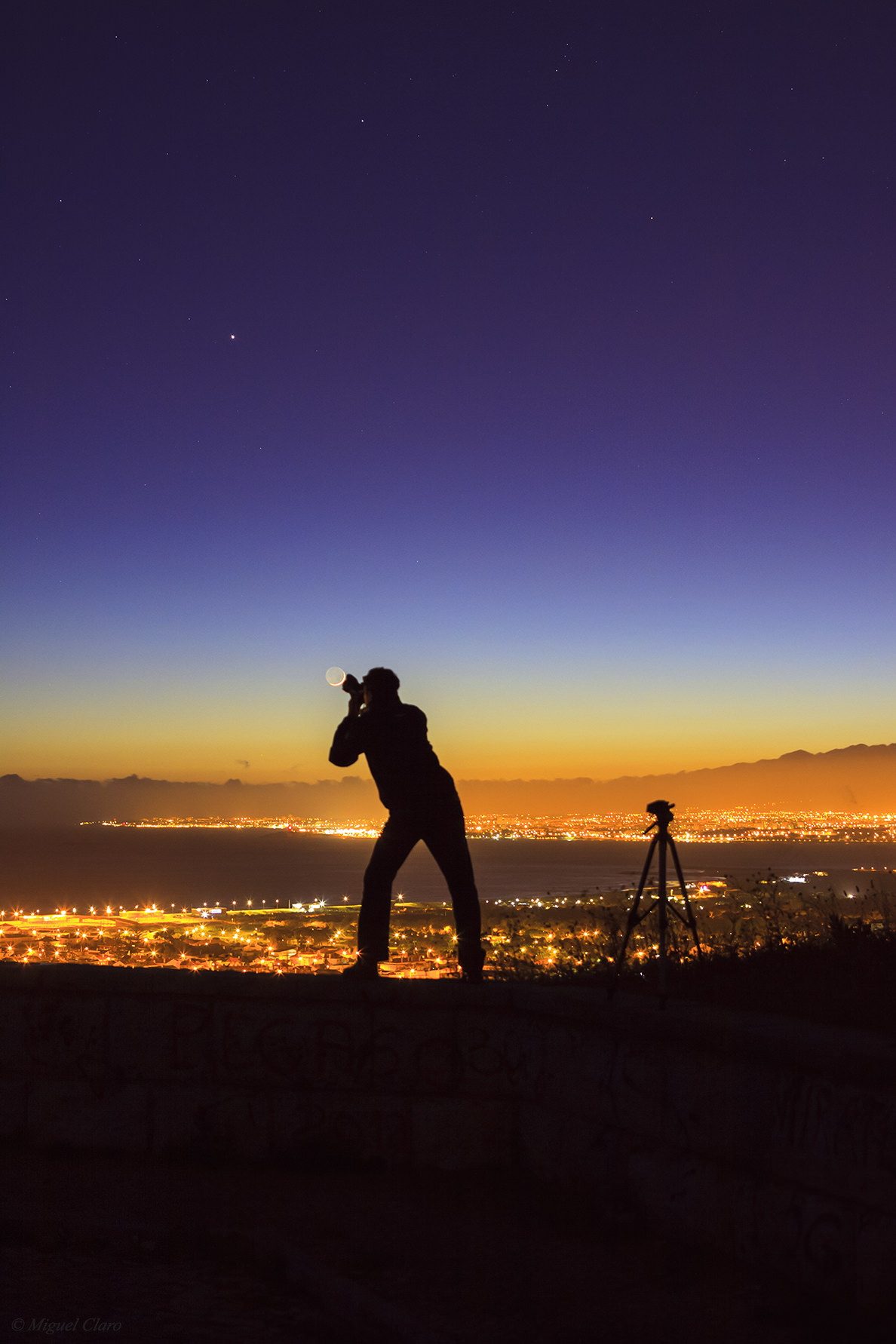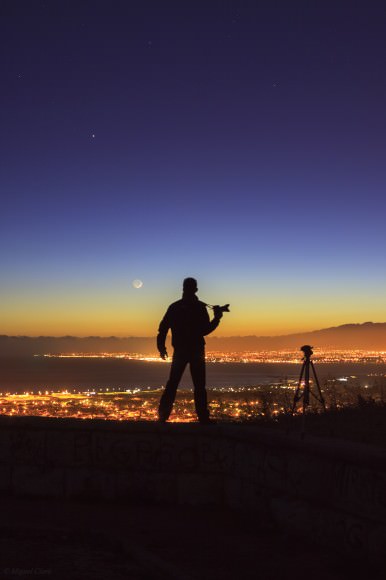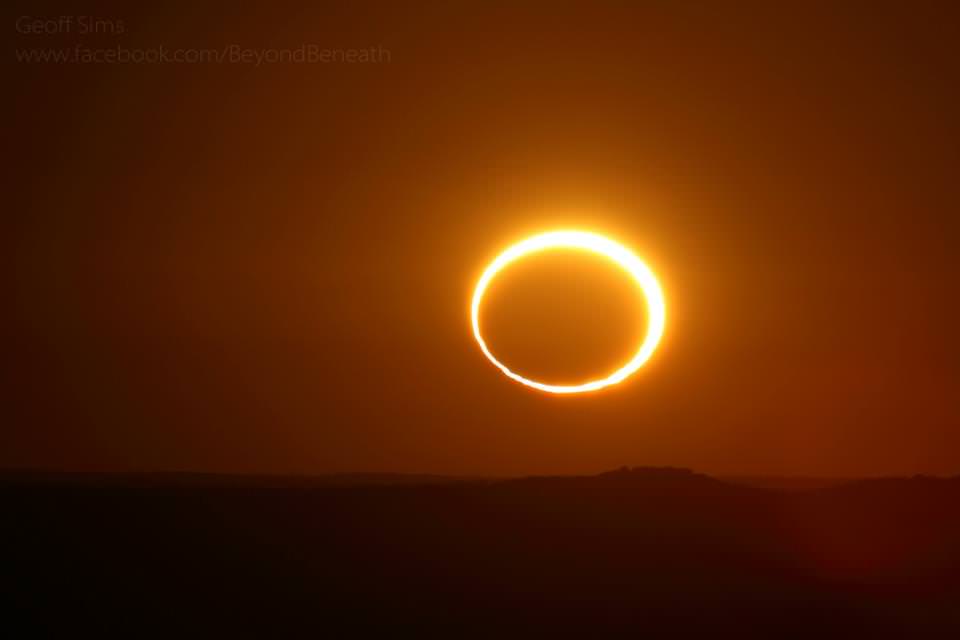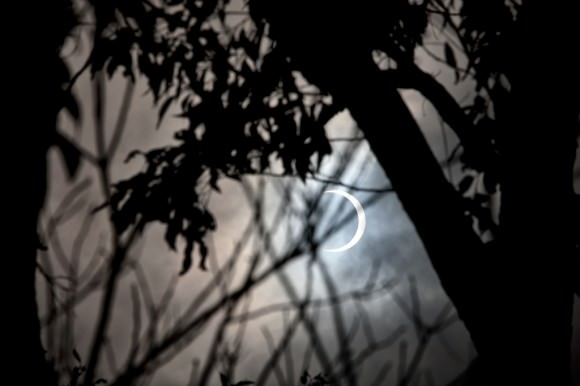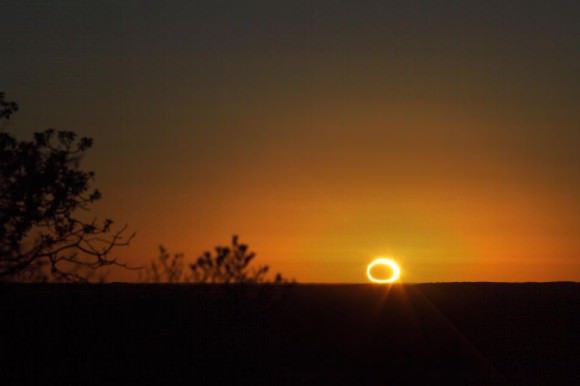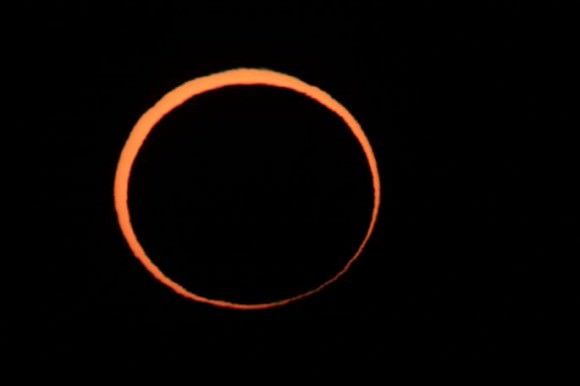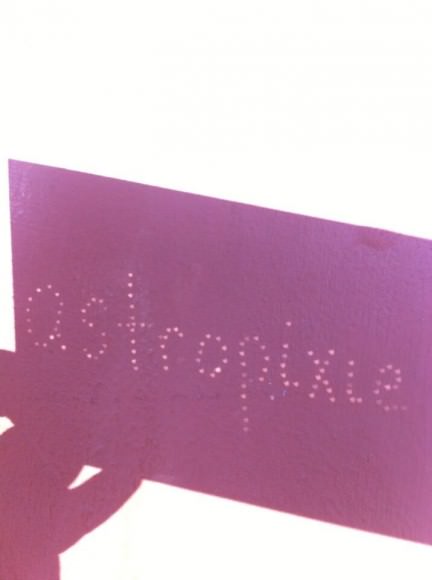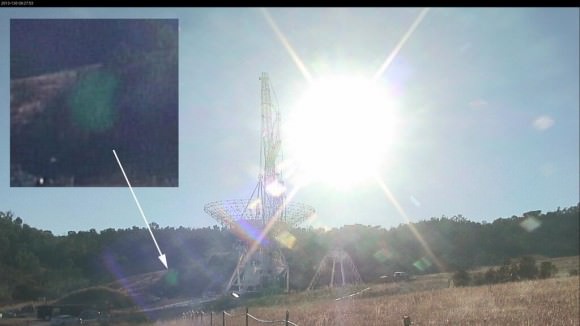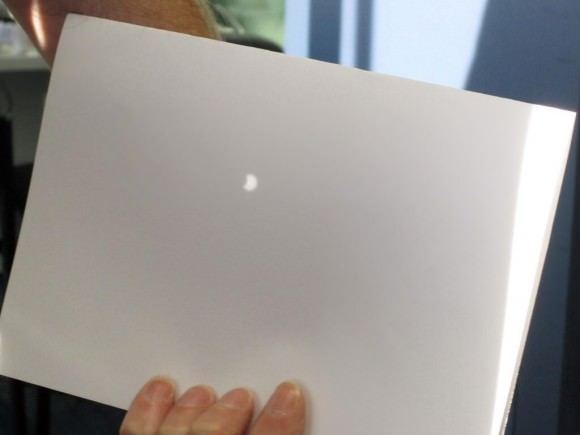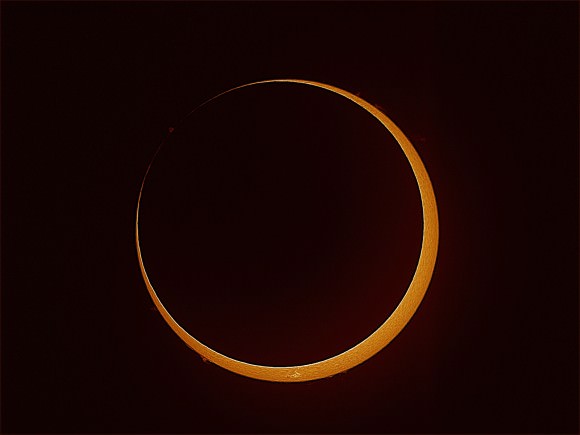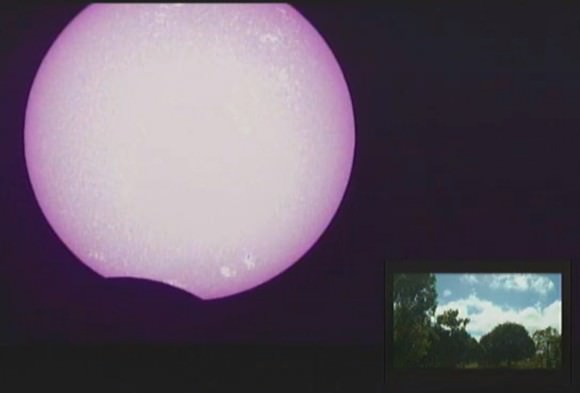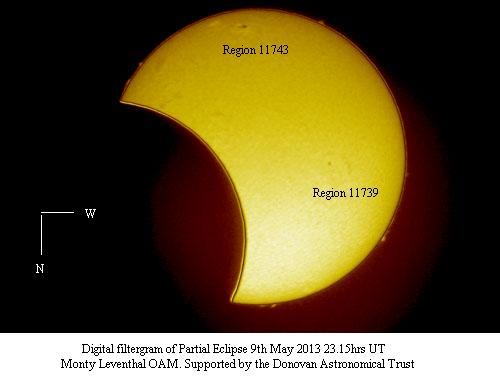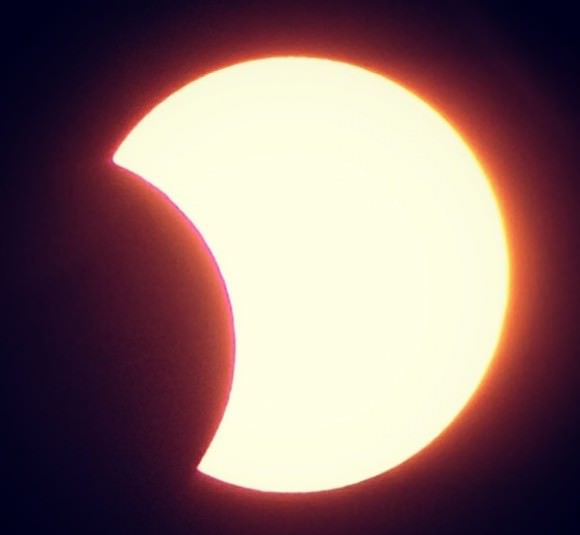Triple planets (Venus/Jupiter/Mercury) conjunction over Mont-Saint-Michel, Normandy, France on May 26. Credit: Thierry Legault –
www.astrophoto.fr
Update: See expanded Conjunction astrophoto gallery below[/caption]
The rare astronomical coincidence of a spectacular triangular triple conjunction of 3 bright planets happening right now is certainly wowing the entire World of Earthlings! That is if our gallery of astrophotos assembled here is any indication.
Right at sunset, our Solar System’s two brightest planets – Venus and Jupiter – as well as the sun’s closest planet Mercury are very closely aligned for about a week in late May 2013 – starting several days ago and continuing throughout this week.
And, for an extra special bonus – did you know that a pair of spacecraft from Earth are orbiting two of those planets?
Have you seen it yet ?
Well you’re are in for a celestial treat. The conjunction is visible to the naked eye – look West to Northwest shortly after sunset. No telescopes or binoculars needed.
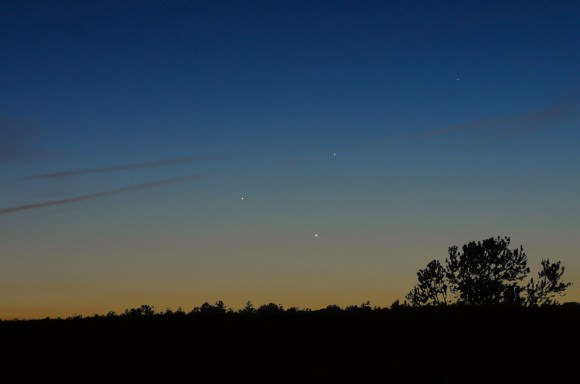
Just check out our Universe Today collection of newly snapped astrophoto’s and videos sent to Nancy and Ken by stargazing enthusiasts from across the globe. See an earlier gallery – here.
Throughout May, the trio of wandering planets have been gradually gathering closer and closer.
On May 26 and 27, Venus, Jupiter and Mercury appear just 3 degrees apart as a spectacular triangularly shaped object in the sunset skies – which
adds a palatial pallet of splendid hues not possible at higher elevations.
And don’t dawdle if you want to see this celestial feast. The best times are 30 to 60 minutes after sunset – because thereafter they’ll disappear below the horizon.
The sky show will continue into late May as the planets alignment changes every day.
On May 28, Venus and Jupiter close in to within just 1 degree.
And on May 30 & 31, Venus, Jupiter and Mercury will form an imaginary line in the sky.
Triple planetary conjunctions are a rather rare occurrence. The last one took place in May 2011. And we won’t see another one until October 2015.
Indeed the wandering trio are also currently the three brightest planets visible. Venus is about magnitude minus 4, Jupiter is about minus 2.
While you’re enjoying the fantastic view, ponder this: The three planets are also joined by two orbiting spacecraft from humanity. NASA’s MESSENGER is orbiting Mercury. ESA’s Venus Express is orbiting Venus. And NASA’s Juno spacecraft is on a long looping trajectory to Jupiter.
Send Ken you conjunction photos to post here.
And don’t forget to “Send Your Name to Mars” aboard NASA’s MAVEN orbiter- details here. Deadline: July 1, 2013
…………….
Learn more about Conjunctions, Mars, Curiosity, Opportunity, MAVEN, LADEE and NASA missions at Ken’s upcoming lecture presentations:
June 4: “Send your Name to Mars” and “CIBER Astro Sat, LADEE Lunar & Antares Rocket Launches from Virginia”; Rodeway Inn, Chincoteague, VA, 8:30 PM
June 11: “Send your Name to Mars” and “LADEE Lunar & Antares Rocket Launches from Virginia”; NJ State Museum Planetarium and Amateur Astronomers Association of Princeton (AAAP), Trenton, NJ, 730 PM.
June 12: “Send your Name to Mars” and “LADEE Lunar & Antares Rocket Launches from Virginia”; Franklin Institute and Rittenhouse Astronomical Society, Philadelphia, PA, 8 PM.
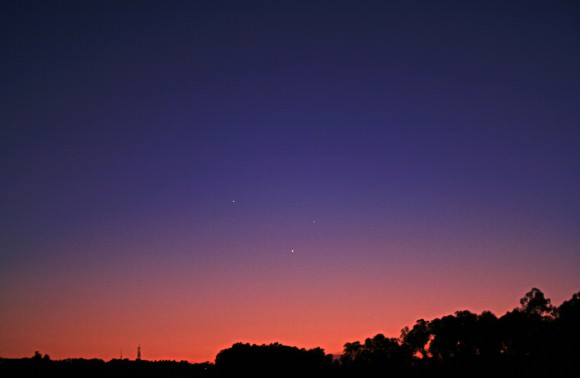
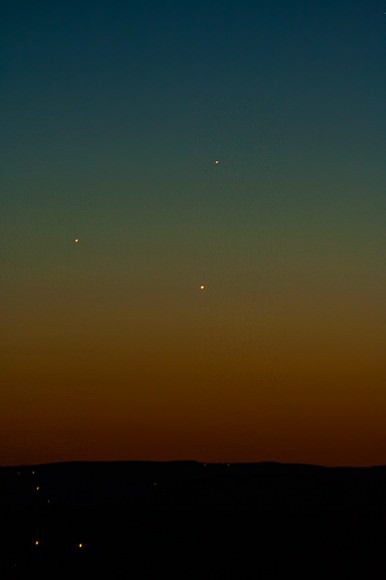
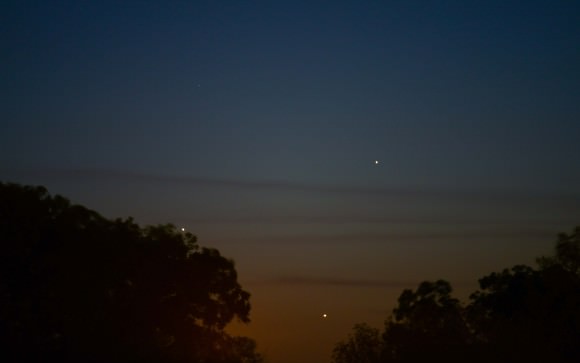
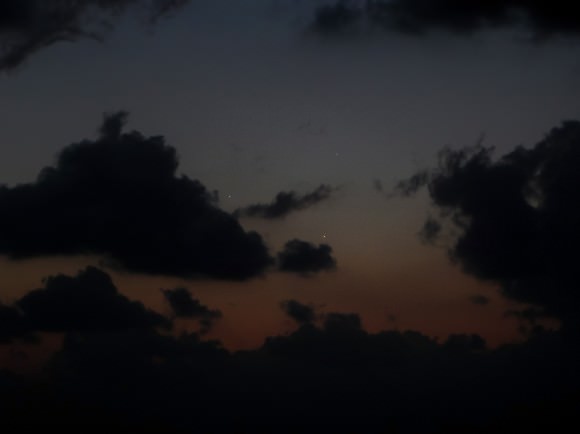
Caption: Taken on 2013-05-23 from Salem, Missouri. Canon T1i, Nikkor 105mm lens. 297 1/4s at 1s interval. Images assembled by QuickTime Pro. Credit: Joseph Shuster
